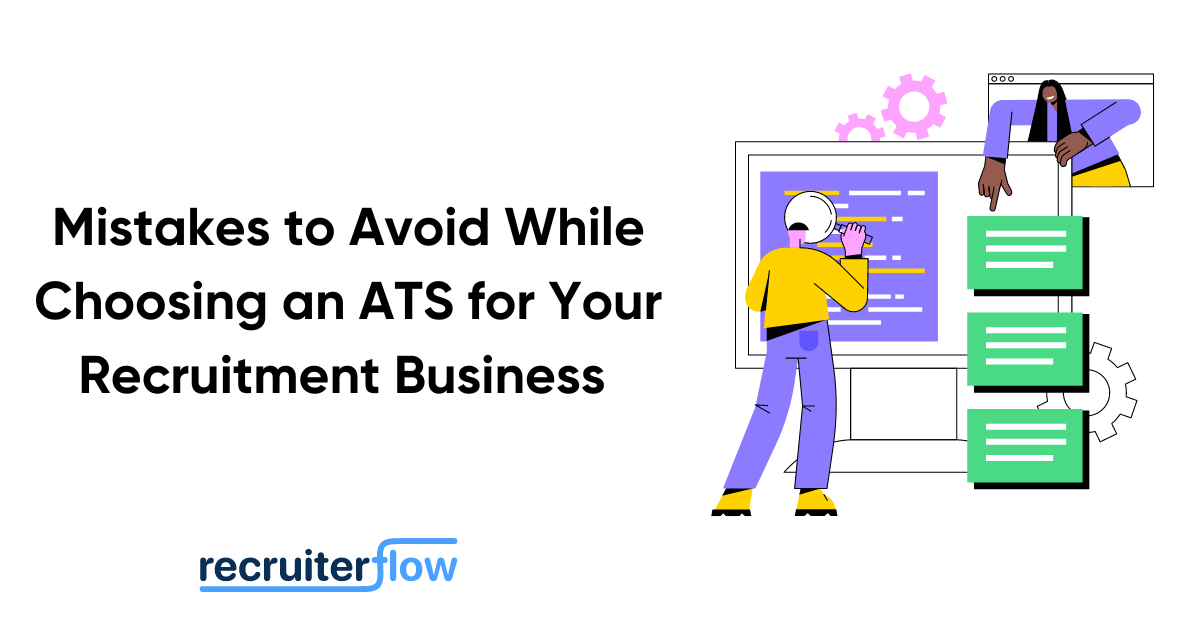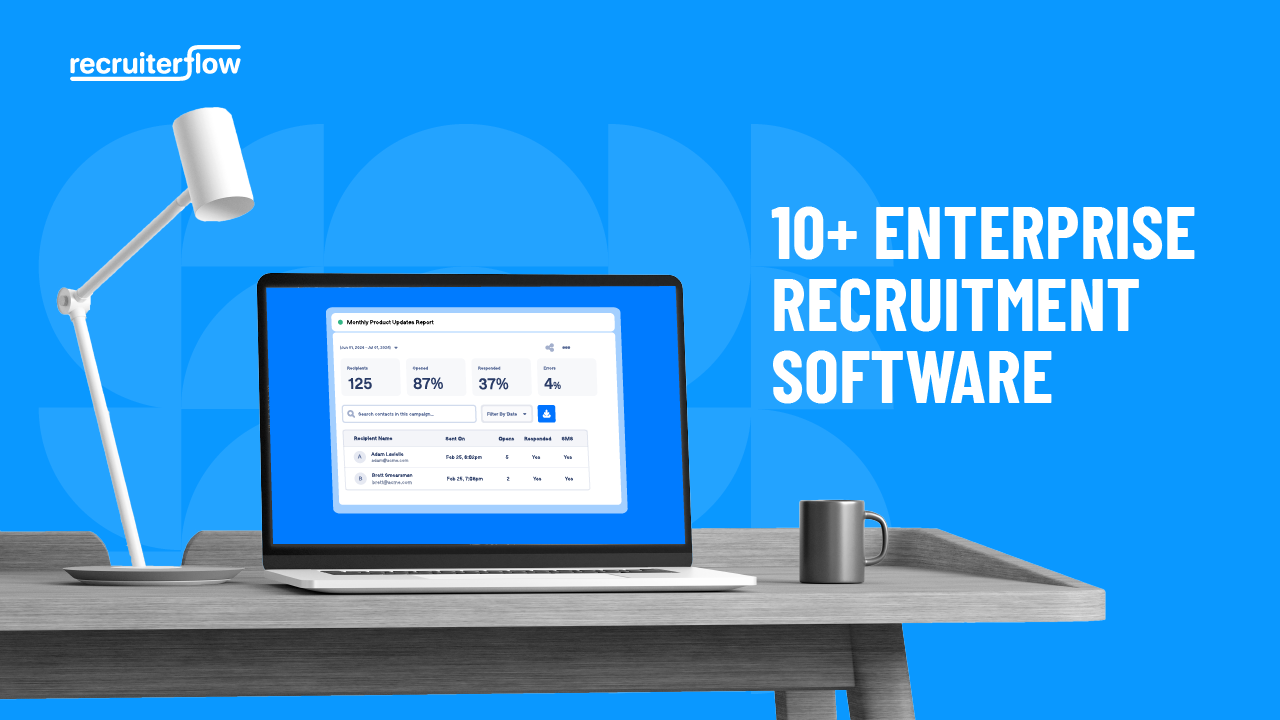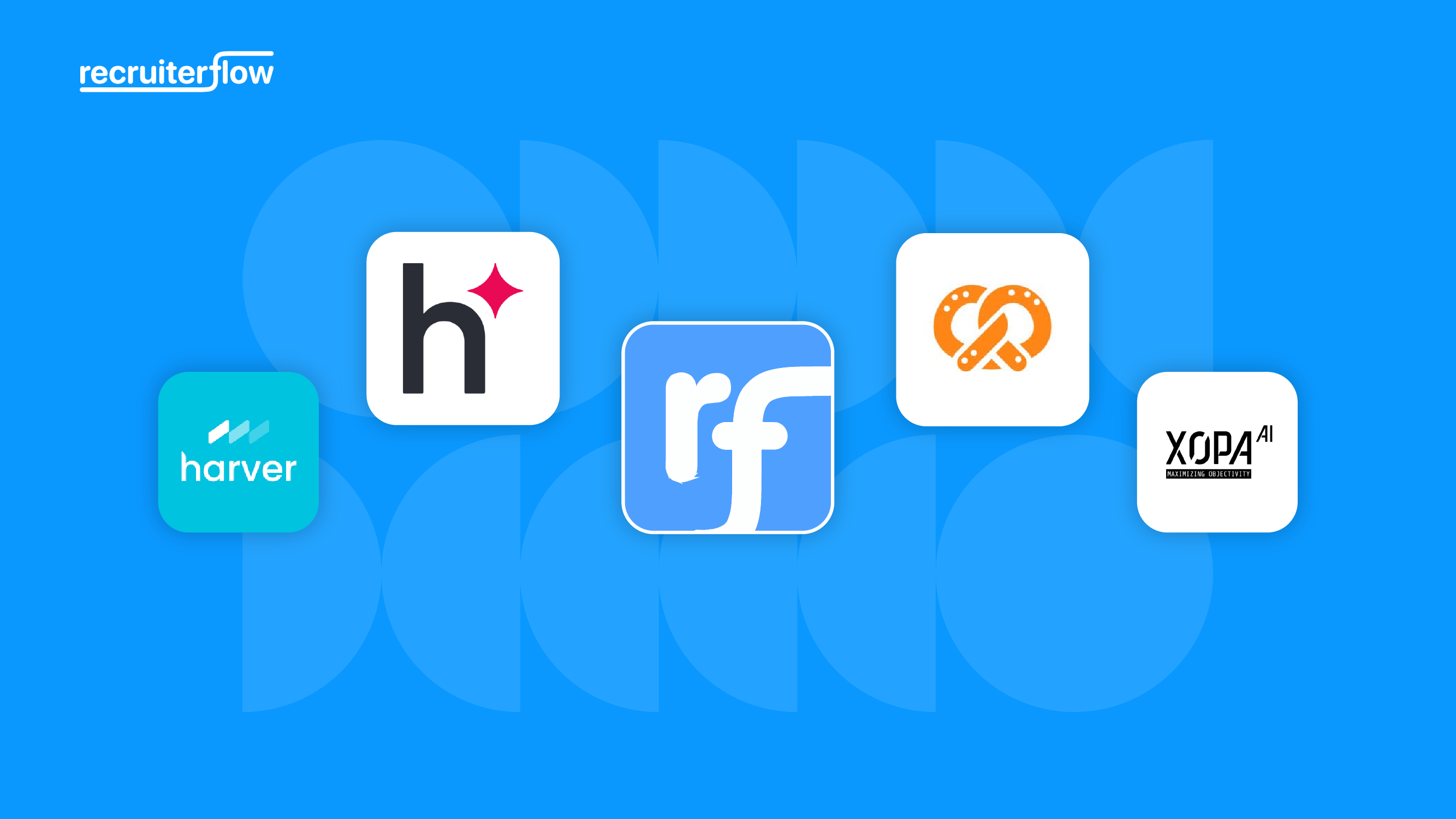
5 Mistakes to Avoid While Choosing ATS for Your Recruitment Business

While choosing your next ATS, there’s a lot to consider in terms of features, user-friendliness, scalability, feasibility, and integrations. Since it’s a long-term investment, you ought to be extra cautious and picky about what perfectly suits you.
Applicant tracking systems are designed to make your workflow easy. When used efficiently, it can take off a great deal of burden off a recruiter’s shoulders. It has the capacity to accelerate your hiring efforts and help you find the best talent possible. But when not used well, it can make no difference to your recruitment process.
We have compiled 5 commonly made mistakes while choosing the best applicant tracking software for the recruitment business.
Mistakes to avoid while choosing ATS
1. Not looking out for options and comparing them
There are 300+ applicant tracking software options in the market. With a free trial and varied features to offer, it’s easy to fall into the trap of quickly settling down for one. This could be a very good mistake. You must venture out to research many ATS providers and compare their features and usability to your business. You must also analyze the cost and the level of customer support provided.
Some ATS look extremely competent and you go for it. Sooner you might realize that it’s of no use since it is complicated to use. Now, you have the burden of learning the functioning of ATS, which is a separate cost altogether.
Do your homework well, find out within your network, take reviews, and analyze them seriously before you make a purchasing decision. Don’t let trivial offers deviate you from the purpose.
Also Read: 40+ Questions to Ask Your ATS Vendor
2. Buying an ATS software that doesn’t suit your business
Every ATS will offer you a long list of features that will assure you of competent hiring as a macro view. But you must not stop here. Dive further and take a micro-view of how usable it would be in your day-to-day functioning.
For example, how long would it take to add a candidate to your database? How user-friendly are the collaborative tools? How easy is it to upload jobs on various social media sites? How easy is it to set the automated procedures? Is the ATS designed exclusively for recruitment and staffing agencies?
Just like no two businesses are exactly alike, neither are two recruitment platforms, and it’s crucial that you find the right fit for your business. If you believe that one size can fit all, then beware, you’re stepping into the wrong zone. Your ATS must understand the workflow of your business and be able to cater to it.
Also, check ATS vs CRM: Why Do You Need Both?
3. Not looking out for scalability
You can’t make an investment without having a long-term vision of your business. The ATS that you choose must take into account your growth strategy and be flexible to adapt to the changing needs. Technology must evolve with the constantly changing needs of the recruitment industry. The ATS is here to stay for long, it’s a long-term investment. So you must keep in mind that your applicant tracking software has the potential to evolve with you as your recruitment business might not have the same requirements 3 years on.
4. Not considering flexible reporting options
Almost all ATS gives you reports and analytics to review your hiring efforts. Is that enough? Imagine having heaps of reports of things that don’t matter or reports that won’t help you plan an intervention.
Reports must add value within your organization structure. For this, you will be required to do some homework to understand what is the exact kind of data that your team will require to review performance. Once you have this at hand, find out with your vendors if their software is flexible enough to provide you with the relevant data.
5. Not considering the cloud-based ATS software
Traditional or in-house systems add extra expenses as they would require services and other additional hardware components along with the software. Then there’s also a recurrent cost of hiring a trained IT professional to launch the system and maintain it. The cloud-based recruitment system saves you all that money on its infrastructure monitoring tools and maintenance. You can access it anywhere on the go and keep your entire team running on the same page. It can be accessed using a phone, laptop or tablet.
Conclusion
Finding the right Applicant Tracking System will be a game-changer for your hiring process. So, don’t drop the ball by overlooking key factors. Do your homework, weigh your options, and hit the nail on the head with a scalable and integrated solution. It’s time to step up your recruitment game and make a winning decision.
Recruitment




Sagrika Jain